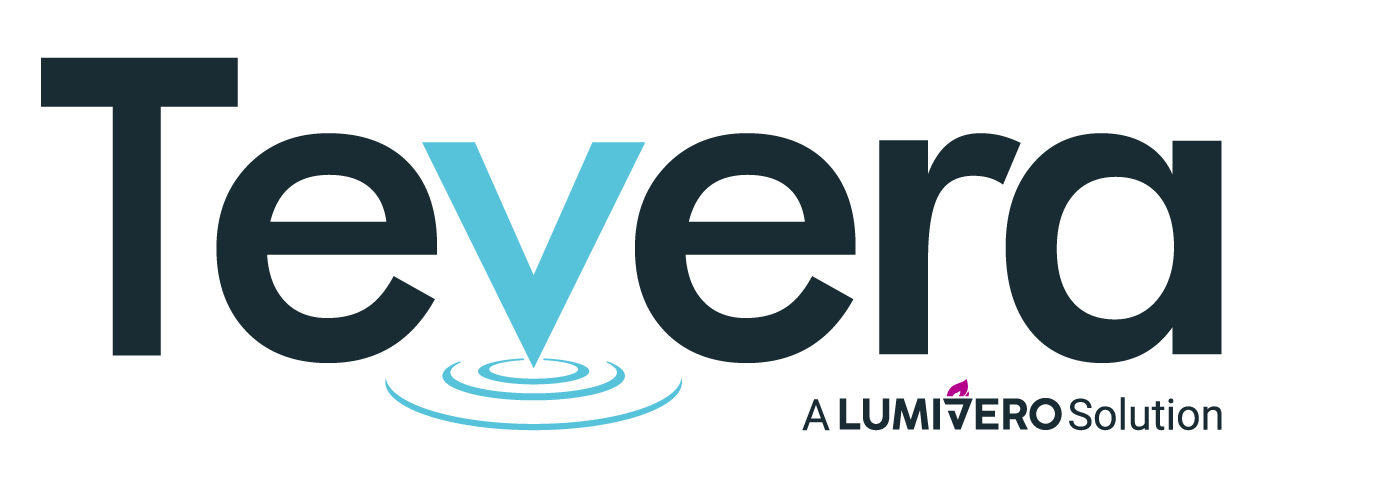Build an outcome-focused learning environment with Tevera

Student assessments are critical to determining whether educational goals are being met. The information gleaned from these assessments is important for a range of audiences including the students themselves, school administrators and instructors, institutions that award school funding and accreditation, and ultimately, students’ future employers.
Today, most educational institutions have the ability to monitor student development based on assigned content (coursework, tests, quizzes, etc.) and grades. While these are key benchmarks, they only form part of the picture. For example, how do educators track how well program performance expectations are aligned with outcomes, view a student’s complete competency profile, or evaluate student performance as a group?
One thing is certain: Educators need to be able to focus squarely on student learning, without the additional and nearly impossible challenge of trying to manually capture, aggregate, and analyze the abundance of data involved in successfully assessing student and overall program performance.
Below are four areas educators should consider when aiming to build an automated, repeatable learning assessment program that includes a full range of assessment points – ensuring a complete and continuous view into the performance and progress of students and the program overall.
Alignment of Rubrics
Rubrics are one of the scoring tools educators use to assess student performance. They help to define expectations and goals for coursework. One standard example of a rubric is an essay assignment that will be judged on factors such as theme, organization, and grammar.
Aligning a program’s assessment standards with rubrics is key to quantifying student performance and reporting to accreditation bodies. With assessment management platforms such as Lumivero’s Tevera, schools can take advantage of capabilities like identifying accreditation standards or key performance indicators to align with program outcomes and developing a master rubric for assessment of student learning outcomes that spans the entire program. Features like these will go a long way towards enabling schools to more easily quantify student performance for accreditation reporting.
Assessment Structure
Measuring student performance isn’t a “one time” endeavor. It involves data spanning more than one assignment, more than one term or semester, and is more complex than simply capturing grades. Educators need valuable insights into student learning and growth, and this is only possible with an approach that can measure student performance and competency development across their entire program in a repeatable way.
Learning assessment platforms, like Tevera, that enable a comprehensive assessment structure across all courses program-wide and can be updated and adjusted, term after term, year after year, in real time can help to achieve these goals.
Assessment Mapping
Assessment mapping refers to the process of aligning learning outcomes or objectives with specific assessments to ensure that the assessments adequately measure the intended knowledge or skills.
Educators should look for solutions that include mapping – making it easy to validate their assessment strategy and ensure all standards are evaluated properly throughout the program. With robust mapping capabilities, they should be able to view and share the alignment of assessment standards to rubrics, class assignments, and other metrics templates with all program stakeholders and accrediting bodies for review and feedback on strategy and outcomes.
With Tevera, administrators can create an assessment map that helps them evaluate their assessment structure, ensure they are collecting all necessary data, and easily export the map to be shared with key stakeholders.
Assessment Reporting
Assessment outcomes reports serve as a valuable tool for all stakeholders in the education ecosystem – from students and parents to educators, administrators, and local governments and policymakers. These reports can be instrumental in helping a wide range of audiences understand individual and institutional performance, and subsequently, make evidence-based decisions based on the data collected during the assessment process. Assessment management platforms that let users instantly generate assessment outcome reports in a variety of formats will allow viewers of all types to gain important knowledge in a format that is tailored to their knowledge level and interest area.
Tevera’s reports allow programs to review student assessment outcomes for individuals, classes, cohorts, and program wide. Plus, with dynamic filtering, programs can uncover deeper insights by reviewing student outcomes based on demographic characteristics.
Lumivero’s Tevera student learning assessment capabilities represent a paradigm shift in education. By embracing the platform’s diverse features, educators and institutions can create a more student-centered, data-driven, and outcomes-focused learning environment.
Are you interested in learning more about how Tevera can help to improve your student assessment initiatives? Contact us to find out how you can easily build a program-wide process for streamlining the assessment of student learning and improving student learning outcomes.
SOLUTIONS
RELATED POSTS
PRODUCT OVERVIEW
See how Tevera can elevate your program.
Build an outcome-focused learning environment with Tevera

Student assessments are critical to determining whether educational goals are being met. The information gleaned from these assessments is important for a range of audiences including the students themselves, school administrators and instructors, institutions that award school funding and accreditation, and ultimately, students’ future employers.
Today, most educational institutions have the ability to monitor student development based on assigned content (coursework, tests, quizzes, etc.) and grades. While these are key benchmarks, they only form part of the picture. For example, how do educators track how well program performance expectations are aligned with outcomes, view a student’s complete competency profile, or evaluate student performance as a group?
One thing is certain: Educators need to be able to focus squarely on student learning, without the additional and nearly impossible challenge of trying to manually capture, aggregate, and analyze the abundance of data involved in successfully assessing student and overall program performance.
Below are four areas educators should consider when aiming to build an automated, repeatable learning assessment program that includes a full range of assessment points – ensuring a complete and continuous view into the performance and progress of students and the program overall.
Alignment of Rubrics
Rubrics are one of the scoring tools educators use to assess student performance. They help to define expectations and goals for coursework. One standard example of a rubric is an essay assignment that will be judged on factors such as theme, organization, and grammar.
Aligning a program’s assessment standards with rubrics is key to quantifying student performance and reporting to accreditation bodies. With assessment management platforms such as Lumivero’s Tevera, schools can take advantage of capabilities like identifying accreditation standards or key performance indicators to align with program outcomes and developing a master rubric for assessment of student learning outcomes that spans the entire program. Features like these will go a long way towards enabling schools to more easily quantify student performance for accreditation reporting.
Assessment Structure
Measuring student performance isn’t a “one time” endeavor. It involves data spanning more than one assignment, more than one term or semester, and is more complex than simply capturing grades. Educators need valuable insights into student learning and growth, and this is only possible with an approach that can measure student performance and competency development across their entire program in a repeatable way.
Learning assessment platforms, like Tevera, that enable a comprehensive assessment structure across all courses program-wide and can be updated and adjusted, term after term, year after year, in real time can help to achieve these goals.
Assessment Mapping
Assessment mapping refers to the process of aligning learning outcomes or objectives with specific assessments to ensure that the assessments adequately measure the intended knowledge or skills.
Educators should look for solutions that include mapping – making it easy to validate their assessment strategy and ensure all standards are evaluated properly throughout the program. With robust mapping capabilities, they should be able to view and share the alignment of assessment standards to rubrics, class assignments, and other metrics templates with all program stakeholders and accrediting bodies for review and feedback on strategy and outcomes.
With Tevera, administrators can create an assessment map that helps them evaluate their assessment structure, ensure they are collecting all necessary data, and easily export the map to be shared with key stakeholders.
Assessment Reporting
Assessment outcomes reports serve as a valuable tool for all stakeholders in the education ecosystem – from students and parents to educators, administrators, and local governments and policymakers. These reports can be instrumental in helping a wide range of audiences understand individual and institutional performance, and subsequently, make evidence-based decisions based on the data collected during the assessment process. Assessment management platforms that let users instantly generate assessment outcome reports in a variety of formats will allow viewers of all types to gain important knowledge in a format that is tailored to their knowledge level and interest area.
Tevera’s reports allow programs to review student assessment outcomes for individuals, classes, cohorts, and program wide. Plus, with dynamic filtering, programs can uncover deeper insights by reviewing student outcomes based on demographic characteristics.
Lumivero’s Tevera student learning assessment capabilities represent a paradigm shift in education. By embracing the platform’s diverse features, educators and institutions can create a more student-centered, data-driven, and outcomes-focused learning environment.
Are you interested in learning more about how Tevera can help to improve your student assessment initiatives? Contact us to find out how you can easily build a program-wide process for streamlining the assessment of student learning and improving student learning outcomes.
Build an outcome-focused learning environment with Tevera

Student assessments are critical to determining whether educational goals are being met. The information gleaned from these assessments is important for a range of audiences including the students themselves, school administrators and instructors, institutions that award school funding and accreditation, and ultimately, students’ future employers.
Today, most educational institutions have the ability to monitor student development based on assigned content (coursework, tests, quizzes, etc.) and grades. While these are key benchmarks, they only form part of the picture. For example, how do educators track how well program performance expectations are aligned with outcomes, view a student’s complete competency profile, or evaluate student performance as a group?
One thing is certain: Educators need to be able to focus squarely on student learning, without the additional and nearly impossible challenge of trying to manually capture, aggregate, and analyze the abundance of data involved in successfully assessing student and overall program performance.
Below are four areas educators should consider when aiming to build an automated, repeatable learning assessment program that includes a full range of assessment points – ensuring a complete and continuous view into the performance and progress of students and the program overall.
Alignment of Rubrics
Rubrics are one of the scoring tools educators use to assess student performance. They help to define expectations and goals for coursework. One standard example of a rubric is an essay assignment that will be judged on factors such as theme, organization, and grammar.
Aligning a program’s assessment standards with rubrics is key to quantifying student performance and reporting to accreditation bodies. With assessment management platforms such as Lumivero’s Tevera, schools can take advantage of capabilities like identifying accreditation standards or key performance indicators to align with program outcomes and developing a master rubric for assessment of student learning outcomes that spans the entire program. Features like these will go a long way towards enabling schools to more easily quantify student performance for accreditation reporting.
Assessment Structure
Measuring student performance isn’t a “one time” endeavor. It involves data spanning more than one assignment, more than one term or semester, and is more complex than simply capturing grades. Educators need valuable insights into student learning and growth, and this is only possible with an approach that can measure student performance and competency development across their entire program in a repeatable way.
Learning assessment platforms, like Tevera, that enable a comprehensive assessment structure across all courses program-wide and can be updated and adjusted, term after term, year after year, in real time can help to achieve these goals.
Assessment Mapping
Assessment mapping refers to the process of aligning learning outcomes or objectives with specific assessments to ensure that the assessments adequately measure the intended knowledge or skills.
Educators should look for solutions that include mapping – making it easy to validate their assessment strategy and ensure all standards are evaluated properly throughout the program. With robust mapping capabilities, they should be able to view and share the alignment of assessment standards to rubrics, class assignments, and other metrics templates with all program stakeholders and accrediting bodies for review and feedback on strategy and outcomes.
With Tevera, administrators can create an assessment map that helps them evaluate their assessment structure, ensure they are collecting all necessary data, and easily export the map to be shared with key stakeholders.
Assessment Reporting
Assessment outcomes reports serve as a valuable tool for all stakeholders in the education ecosystem – from students and parents to educators, administrators, and local governments and policymakers. These reports can be instrumental in helping a wide range of audiences understand individual and institutional performance, and subsequently, make evidence-based decisions based on the data collected during the assessment process. Assessment management platforms that let users instantly generate assessment outcome reports in a variety of formats will allow viewers of all types to gain important knowledge in a format that is tailored to their knowledge level and interest area.
Tevera’s reports allow programs to review student assessment outcomes for individuals, classes, cohorts, and program wide. Plus, with dynamic filtering, programs can uncover deeper insights by reviewing student outcomes based on demographic characteristics.
Lumivero’s Tevera student learning assessment capabilities represent a paradigm shift in education. By embracing the platform’s diverse features, educators and institutions can create a more student-centered, data-driven, and outcomes-focused learning environment.
Are you interested in learning more about how Tevera can help to improve your student assessment initiatives? Contact us to find out how you can easily build a program-wide process for streamlining the assessment of student learning and improving student learning outcomes.

















